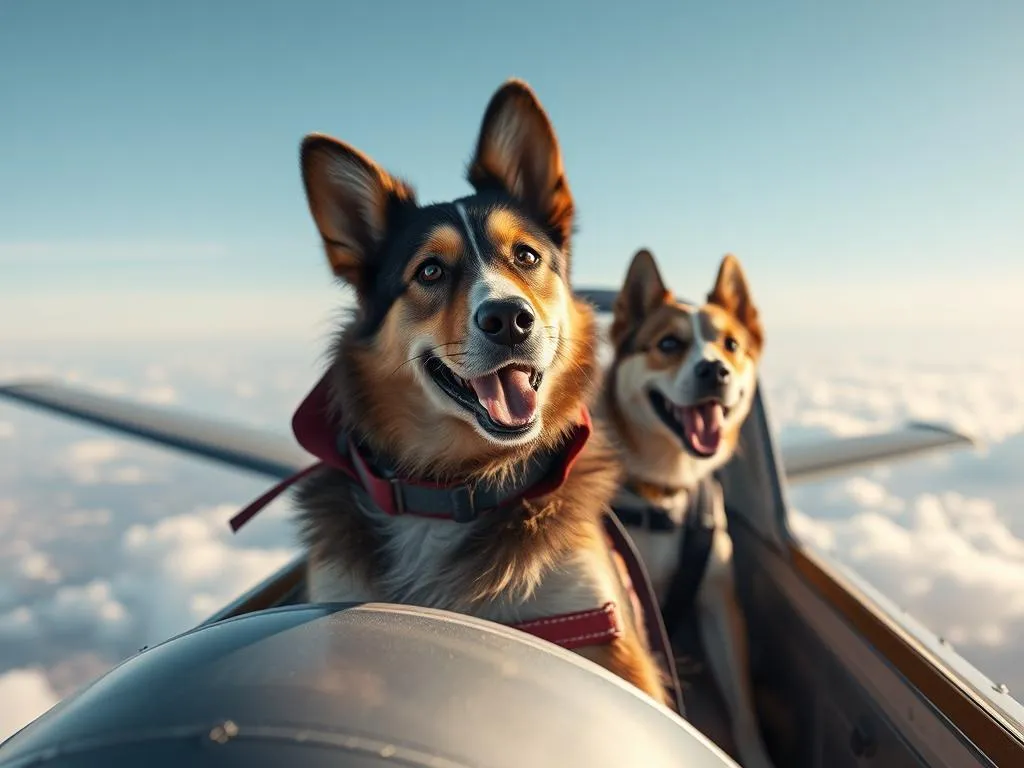
Traveling with your furry friend can be a rewarding experience, but understanding the ins and outs of when dogs can ride on planes for free is essential for a smooth journey. Airline policies regarding pet travel can vary significantly, and knowing these rules can save you time, stress, and potentially, money.
Understanding Airline Policies
Overview of Airline Regulations
Before you pack your bags, it’s crucial to familiarize yourself with general airline policies regarding pets. Most airlines have specific regulations for traveling with dogs, which can include size limits, breed restrictions, and travel fees. Domestic flights usually have more flexible policies compared to international flights, where additional documentation and health certifications may be required.
Specific Airline Policies
Major airlines differ in their approach to pet travel. Here’s a brief comparison of some of the biggest players:
- American Airlines: Allows small dogs in the cabin for a fee, while larger dogs must travel in cargo.
- Delta: Similar policy; however, service dogs can travel for free in the cabin.
- Southwest: Offers pet travel but has a limited number of pets allowed per flight, and they need to be in a carrier.
Understanding these specific policies is essential, especially when you consider options for in-cabin travel, cargo, and service animals.
Factors Influencing Free Travel for Dogs
Size and Weight Limits
For dogs to ride for free in the cabin, airlines typically impose size and weight restrictions. Most airlines require pets to fit comfortably in an airline-approved carrier that can be stowed under your seat. Generally, dogs must weigh no more than 15-20 pounds, but this varies by airline.
Type of Dog
The classification of your dog significantly affects travel costs. Service dogs are generally allowed in the cabin free of charge, while emotional support animals may not enjoy the same privileges depending on the airline. It’s essential to understand your dog’s classification and the specific policies surrounding each type.
Age and Health Considerations
Airlines often have minimum age requirements for pet travel. Puppies, for instance, may not be allowed to fly until they are at least eight weeks old. Additionally, health certifications and documentation may be necessary, especially for international flights. Ensure your dog is in good health and has received all necessary vaccinations before travel.
Benefits of Traveling with Dogs
Emotional Support and Companionship
One of the most significant advantages of traveling with dogs is the emotional support they provide. The bond between a dog and its owner can help alleviate anxiety during travel, providing comfort to both parties.
Reduced Stress for Dogs
Traveling together can also minimize anxiety in dogs. Familiar surroundings, such as their owner’s presence, can make the journey less stressful for them. Many dogs feel more secure when they are with their owners, reducing the likelihood of behavioral issues during flights.
Opportunity for Outdoor Activities
Pet-friendly destinations often offer a variety of outdoor activities for you and your dog to enjoy. Traveling with your dog allows for shared experiences, such as hikes, beach outings, or visits to dog parks, enhancing the overall travel experience.
Preparing for Air Travel with Dogs
Health Check and Documentation
Before you embark on your journey, schedule a vet visit. A health check is crucial to ensure your dog is fit for travel. Additionally, you may need a health certificate and proof of vaccinations, depending on your destination and airline requirements.
Choosing the Right Carrier
Selecting the right carrier is vital for your dog’s comfort and safety. Look for an airline-approved carrier that meets the size requirements for in-cabin travel. Familiarize your dog with the carrier before the trip to help them feel more comfortable.
Packing Essentials for Your Dog
Packing thoughtfully can make a significant difference in your dog’s comfort during travel. Here’s a quick checklist of items to consider:
- Food and Water: Enough for the duration of the trip.
- Travel Bowls: Collapsible bowls are convenient.
- Leash and Harness: Ensure your dog is secure during airport procedures.
- Toys or Comfort Items: Familiar items can help reduce anxiety.
- Health Records: Keep documents readily available.
Traveling with Dogs: Step-by-Step Guide
Booking Your Flight
When booking your flight, confirm that your dog’s travel arrangements are included. Some airlines have limited spots available for pets in-cabin, so it’s wise to book early and ensure your dog is on the reservation.
Arriving at the Airport
Arriving at the airport can be overwhelming for both you and your dog. Keep your dog on a leash and allow them to relieve themselves before entering the terminal. Allocate enough time to navigate through security and boarding processes.
During the Flight
Keeping your dog calm during the flight is essential. Bring along their favorite toy or blanket for comfort. You can also provide short bursts of attention and reassurance to help ease any anxiety.
Post-Flight Care
Once you land, check on your dog’s well-being immediately. Offer them water and allow them to relieve themselves. If traveling internationally, ensure you have all required documentation handy for customs.
Common Challenges and Solutions
Dealing with Anxiety or Fear
Travel can be stressful for dogs. If your dog has a history of anxiety, consider consulting with your veterinarian about anti-anxiety medications or natural supplements that may help. You can also practice desensitization techniques before your trip.
Unexpected Situations
Travel can be unpredictable. Be prepared for delays or cancellations, and have a plan in place for emergencies, such as knowing the location of veterinary services at your destination.
Troubleshooting Airline Issues
If your dog is denied travel due to size or breed restrictions, contact the airline immediately. Some airlines may offer alternative solutions, such as changing to a different flight or providing options for cargo travel.
Conclusion
Understanding when dogs can ride on planes for free requires careful consideration of airline policies, your dog’s health, and travel preparations. By doing thorough research and preparation, you can ensure a pleasant travel experience for both you and your dog. Remember, whether your dog is a service animal or a cherished companion, the key to successful travel lies in knowing the rules and being adequately prepared for the journey ahead.
Traveling with dogs can be a rewarding experience, enhancing your adventures while ensuring your furry friend stays healthy and happy.









